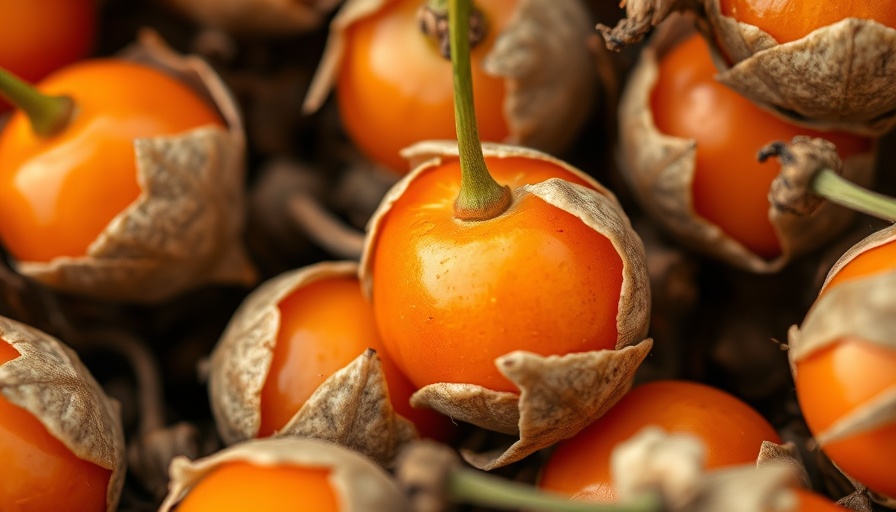
Discovering the Delight of Ground Cherries: A Hidden Gem in Your Garden
When it comes to backyard gardening, achieving a fruitful harvest often requires exploring lesser-known varieties that offer both unique flavors and growth challenges. Ground cherries (known scientifically as Physalis pruinosa) are one such gem. These delightful little fruits are often overlooked in favor of more common staples like blueberries or strawberries. But once you enter the world of ground cherries, you’ll discover why they deserve a special spot in your garden.
What Are Ground Cherries?
Native to the warm climates of Central America and Northern Mexico, ground cherries are unique little fruits that hide within a papery husk, much like tomatillos. Their flavor is deliciously sweet with tropical notes reminiscent of caramelized pineapple, making them an irresistible treat for children and adults alike. The plants have sprawling habits, with large, dark green leaves providing a lush backdrop to their small, yellow flowers that lead to the golden-orange fruits.
Cultivating Ground Cherries in Your Garden
To successfully grow ground cherries, it's important to start with quality seeds, typically found at specialty garden centers or farmers' markets. These plants prefer a sunny spot with well-drained soil. In the early spring, sow seeds indoors or directly into the garden once the threat of frost has passed. Maintaining moisture is key, especially during the flowering stage, to ensure a bountiful harvest.
Challenges in Harvesting
While ground cherries are relatively easy to grow, harvesting them can prove to be a bit of a challenge. Unlike many fruits that are picked while still hanging on the plant, ground cherries fall to the ground when they're ripe. This gradual ripening means a few weeks of careful monitoring and close-to-the-ground collection. To make the task more efficient, consider using raised garden beds that can ease the bending and squatting involved in harvesting.
The Nutrition and Versatility of Ground Cherries
Ground cherries are not just a unique gardening endeavor; they also pack a nutritious punch. Low in calories but rich in vitamins A and C, they make a healthy addition to any diet. Their sweet, tangy flavor lends itself well to various culinary applications, from jams and preserves to toppings for desserts or even fresh in salads. Try creating a ground cherry salsa for a summer cookout—it's bound to impress your guests!
Saving Seeds for Future Harvests
If you find yourself enamored with ground cherries, saving seeds for future plantings is a rewarding endeavor. After harvesting, allow some fruits to fully mature on the vine before collecting the seeds. Once dried, store them in a cool, dark place until next season to continue your garden's legacy.
Beat the Pests: Ground Cherry Care Tips
As with any garden plants, ground cherries are susceptible to pests, including aphids and the dreaded fruit worm. Maintaining proper spacing and airflow can help to minimize these issues. Companion planting with herbs like basil or marigold can also help deter unwanted pests naturally, while still promoting a vibrant garden ecosystem.
Ground Cherry FAQs: Common Questions Answered
As interest in ground cherries grows, so do the questions surrounding their cultivation. How much water do they require? What are the signs of ripeness? Addressing these frequently asked questions can help budding gardeners feel more confident in their gardening adventures.
Creating Your Own Ground Cherry Recipes
The unique flavor of ground cherries inspires many to incorporate them into creative kitchen projects. Try making ground cherry pie, a delightful twist on the classic, or mix them into your favorite BBQ sauce for a burst of sweetness. Embracing these little fruits in your culinary repertoire adds exciting flavors that will certainly become a topic of conversation.
Conclusion: Embrace the Ground Cherry Journey
Growing ground cherries opens the door to a world of delightful flavors and garden adventures. While these little fruits might take a bit more effort to harvest, their delicious taste and the joy of nurturing them through the growing season make it all worthwhile. So don your gardening gloves, clear a sunny spot, and prepare to be amazed by the world of ground cherries!
 Add Row
Add Row  Add
Add 




Write A Comment